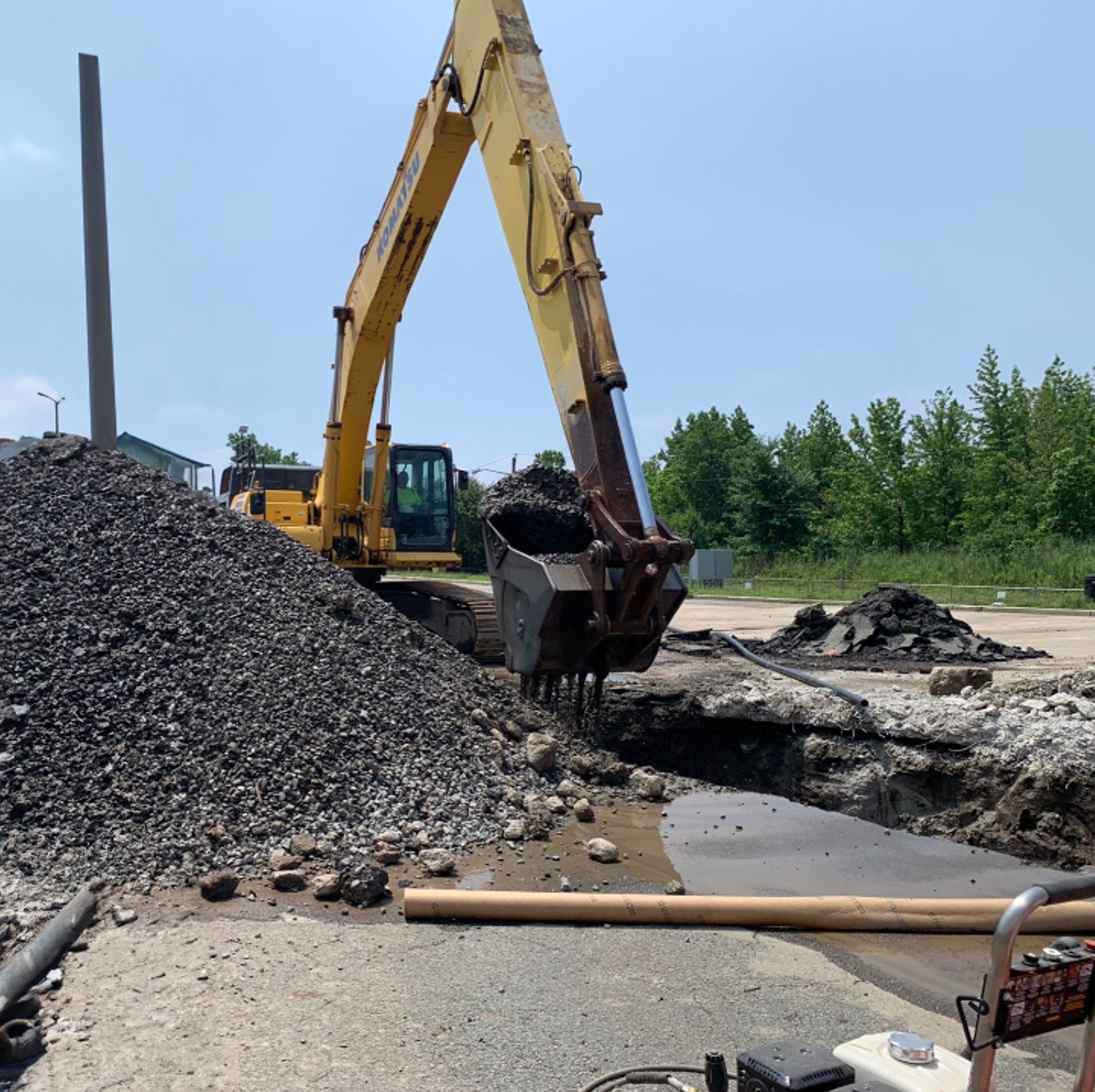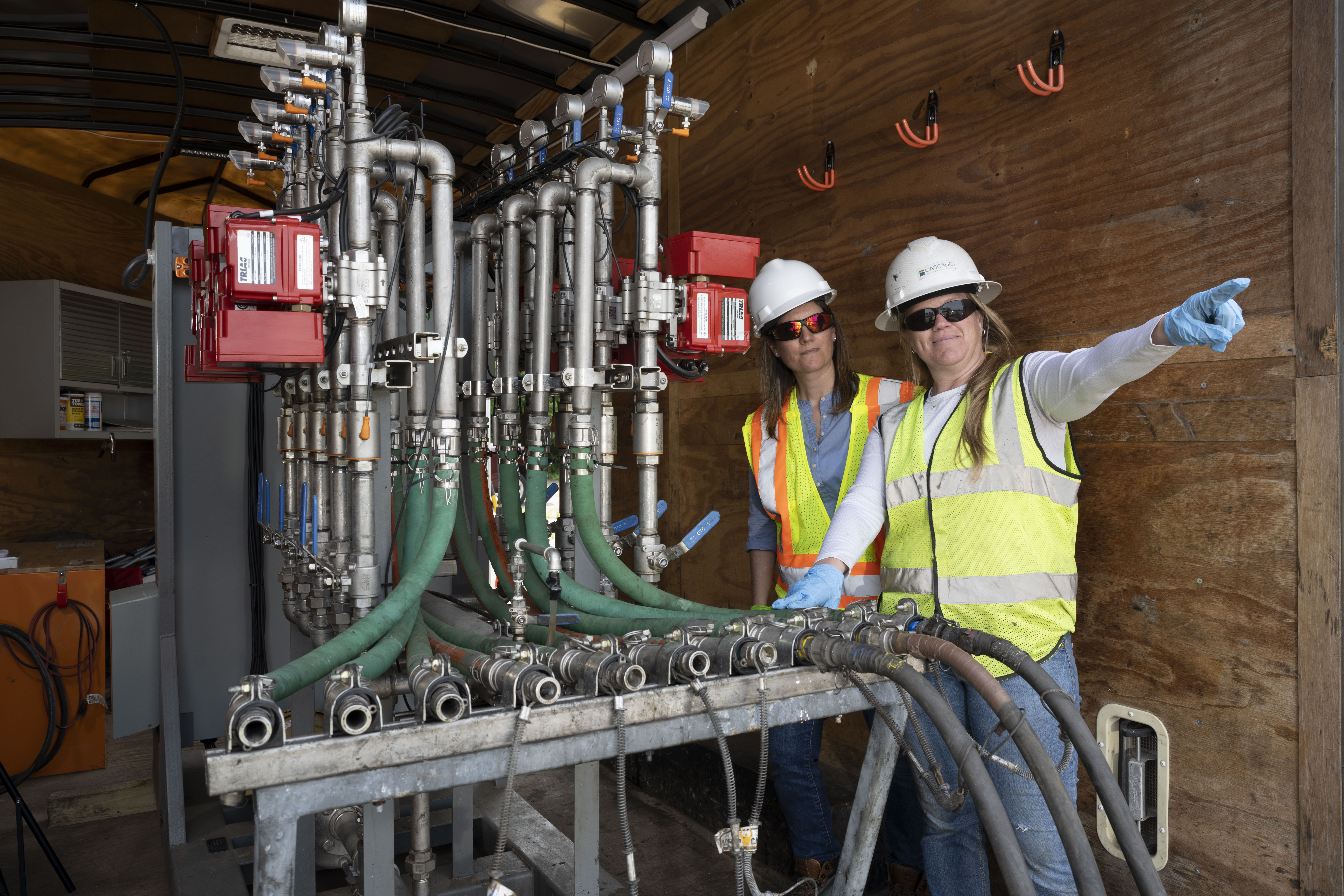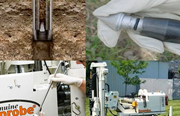- Rob Danckert
Every year, it seems the number of perfluoroalkyl and polyfluoroalkyl substances (PFAS) sites requiring investigation grows in both the private and public sectors. One of the biggest concerns in working on these sites during the characterization stage is cross-contamination. Contractors play a critical role in minimizing the potential for PFAS compounds within or on drilling tools to cross-contaminate samples. If proper care isn’t taken, contaminated samples could lead to biased or false positive results in laboratory analysis.
In this blog post, I’ll cover potential points of cross-contamination that you should be aware of, so you can evaluate if your drilling and site characterization contractors are properly managing the risks of a possibly PFAS-contaminated site.
If you’d like to dive deeper into concerns about cross-contamination during characterization, watch our webinar on-demand, PFAS 101: Characterization Technologies and Best Practices. In the presentation, I was joined by Vice President of Technology, Eliot Cooper, and, Technical Expert, Casey Moore, who covered PFAS characterization technologies, requirements, and best practices.
Drilling Media
Many drill rigs require one of two types of media for the drill to advance: air or water. Air used in rotary methods is to advance the drilling tooling and allow for cuttings to be brought to the surface, while water and associated drilling “muds” may be the alternative. What do both media have in common? Their potential to act as a medium from PFAS-containing components within the rig that can be unintentionally transferred to the subsurface or even samples.
If you are working with a contractor experienced on PFAS sites, they should be able to explain what they do to eliminate this potential issue—so ask!
Drill Rig Components
Assuming the source of water is determined to be free of PFAS, the primary concern is that components of the drill rig may have PFAS-laden components with the potential to leach directly into the conveyance water used during the drilling process.
Cascade undertook a study in 2015 to understand common component materials under trade names known to manufacture components containing PFAS (i.e., Teflon, Viton, etc.). What we found was that some parts, ranging from rubber stators within an onboard pump to bushings and O-rings, had components with the potential to contain PFAS. A reasonable and pragmatic determination was made that these components could not be removed from the rig, nor was a study undertaken to analyze these components via more common total fluorine or LC/MS/MS analytical methods. However, the concern of these materials’ contact with conveyance water could be lessened with equipment “blank” samples to be obtained by the owner's representative. Blank samples collected from the rig are a common practice to understand the potential for cross-contamination
Whether you work with Cascade or not, your contractor should have an understanding of which components of their equipment may contain PFAS—and coordinate with you to permit equipment blank sample collection.
Portable Bladder Pumps
Portable bladder pumps are often used to obtain groundwater samples from depths beyond the abilities of peristaltic pumps or when regulations require bladder pump use. Bladder pump operation uses a gas drive to squeeze and release a bladder to force groundwater to the surface during events like monitoring well sampling. What many people don’t know is that older bladders and O-rings in these pumps were often constructed of PFAS-containing materials.
Most major manufacturers have now replaced these bladders with non-PFAS-containing materials, but it doesn’t hurt to ask and be certain.
Lubricants
Lubricants of all kinds are used on a drill rig, but the ones that are most common and most likely to contact drilling media or samples are pipe thread and air hammer-based lubricants. It’s important to ensure thread and air hammer compounds are bio- or food-based and do not have PFAS-containing compounds. Confirm with your contractor that those are the types of lubricants they are using.
Air Compressors
Air compressors, either on-board or auxiliary, are often used during the drilling process for borehole advancement through tighter or bedrock formations. Internal combustion engines and their pistons sometimes rely upon an oil reservoir to keep components lubricated. While the pistons have sealing rings to separate the compressed air above the piston from the lubricating oil beneath it, those rings do have a tendency to degrade over time if the compressors are not well-maintained. If O-rings are not replaced, the potential exists for lubricating oil (potentially containing PFAS) to enter the air stream and be inadvertently advanced down the borehole potentially affecting sample integrity.
Ask about the maintenance of the compressor and, potentially, the oil types.
This blog post is unfortunately not comprehensive—there are many ways PFAS cross-contamination can occur. However, these are some of the most common and preventable.
If you have more questions about cross-contamination or other aspects of dealing with PFAS on a project site, register for our webinar on demand and get them answered by our panel of experts.
ABOUT THE AUTHOR

Rob Danckert
Key Accounts Manager
[email protected]
Rob Danckert wears many hats at Cascade. Rob manages major accounts across Cascade’s subsidiaries, leads the pursuit of federal opportunities within the DOD and EPA realms, directs cross-selling initiatives within Cascade’s multiple service lines, and dabbles in operational efforts. He is a licensed professional geologist in the state of New Hampshire where he lives with his wife and two young children.
Categories
- Site Remediation
- Drilling
- Careers
- Cascade Chemistries
- Safety
- Site Characterization
- Thermal
- Rotary
- Sustainability
- In Situ Stabilizaton
- High Resolution Site Characterization
- Injection
- Sonic Drilling
- Automated injection
- corporate sustainability
- case studies
- in situ thermal remediation
- Cascade Drilling
- Over Water Drilling
- In Situ Stabilization (ISS)
- ISS
- Environmental Remediation











